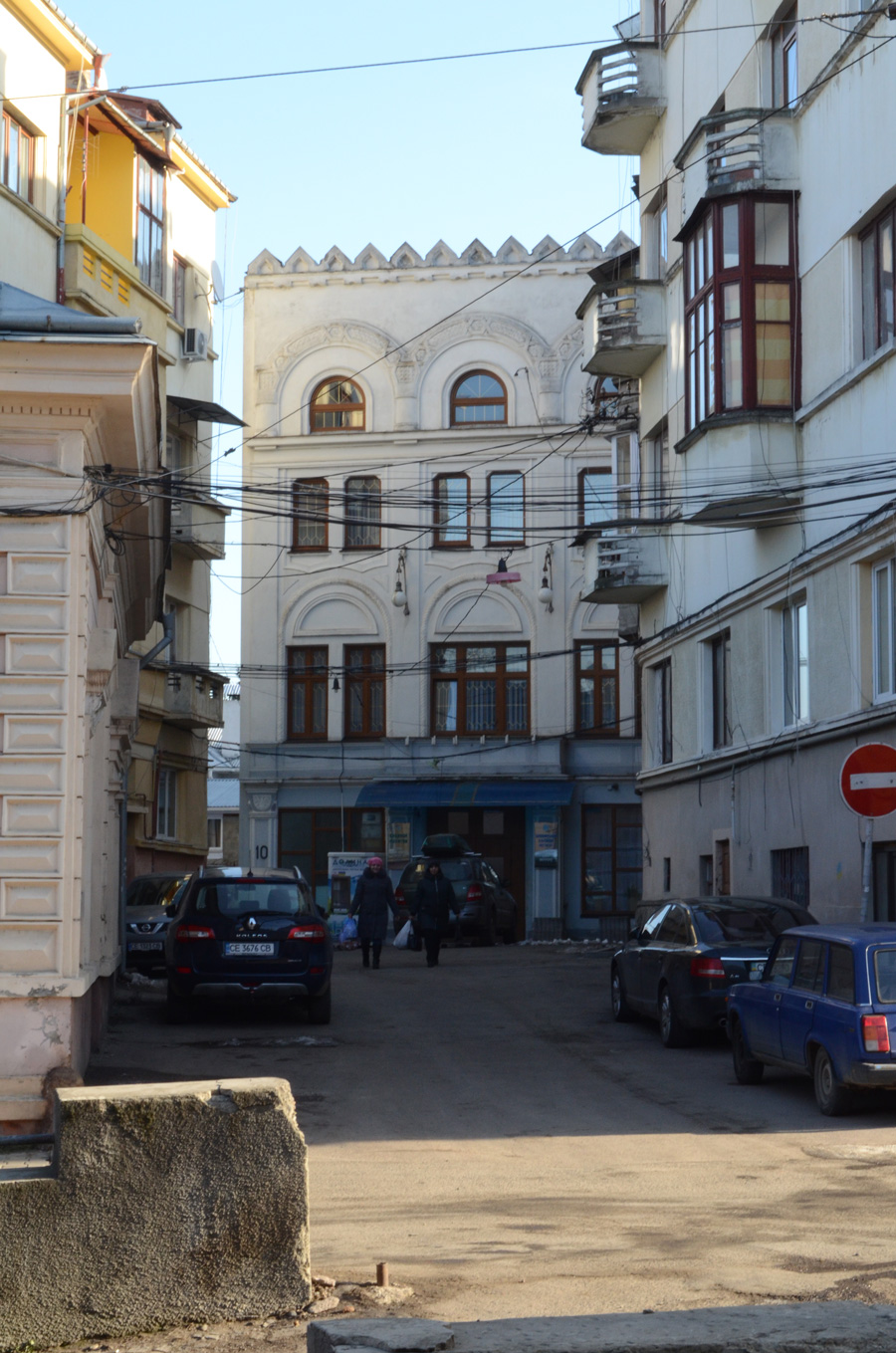If you go into the courtyard between buildings #6 and #16 in Turetska Street, you will see a building with oriental motifs. This is where the Jewish cultural and educational center “Toynbee Hall” used to operate. It was erected at the beginning of the 20th century by the Association of the same name, whose mission was to educate and enlighten Jewish people of Chernivtsi. The idea of opening centers for worked to use in their spare time came from England. In Austria-Hungary these centers were widely used also for political work. “Toynbee Hall” in Chernivtsi was meant to be a center of cultural, educational, social and political activity of Zionist Jews.
The Toynbee Chernivtsi association was founded in 1912 by leading representatives of the local Zionist movement. The students’ association “Hebronia” and other Zionist groups took an active part in the establishment of the “Toynbee Hall”, in particular, by organizing fundraising. However, main financial aid came from the philanthropist couple – Anna and Markus Kisslinger, who were the trustees of the institution. The cultural and education center opened in 1913 and quickly also became a place for other independent institutions. A kindergarten, a boarding school and Safah Ivriah´s temporary school were located here, on what is today Synagogue Street Nr 6. Sylvia Segenreich, who was born in 1926, remembers spending time at Toynbee Hall in her interview with Centropa:
My family was religious. […] During the Jewish High Holidays, my father wore a kipa and tefillin, and we also celebrated Shabbat […]. The children always got new clothes for the High Holidays, and the celebrations were very traditional. There were around 15 shuls in our area, that´s how we called synagogues; There was even a small shul near us where we had reserved seats, but for the High Holidays, we went to Toynbee Hall. It was very big hall and many people would go there.
During World War I, the Toynbee Hall´s activities were interrupted and only resumed after 1918. In the inter-war time the “Toynbee Hall” hosted lectures, courses, theatre performances and political meetings. The Romanian authorities didn’t object to the work of this Jewish center since it resulted in Jews emigrating to Palestine. The Soviet authorities, which came in 1940, took a different approach. Zionism leaders were persecuted, the “Toynbee Hall” was nationalized and turned into the house of culture for railway workers.
In 1941, the Toynbee Hall became part of the Chernivtsi Ghetto. Almost nothing is known about the usage of the building at that time, but it is assumed that in 1943 a half-legal Jewish school was operating from here.
After the war the building of the “Toynbee Hall” was used again as a house of culture for railway workers and it served this purpose until the collapse of the USSR. In September 1991 the Seventh Day Adventist Church became the new owner of the building. Nowadays they use the building as a praying house. Historic photos show the inscription “Jüdische Toynbee Halle” in large letters on the building´s façade; today, there are no traces of the Jewish past of this building.
